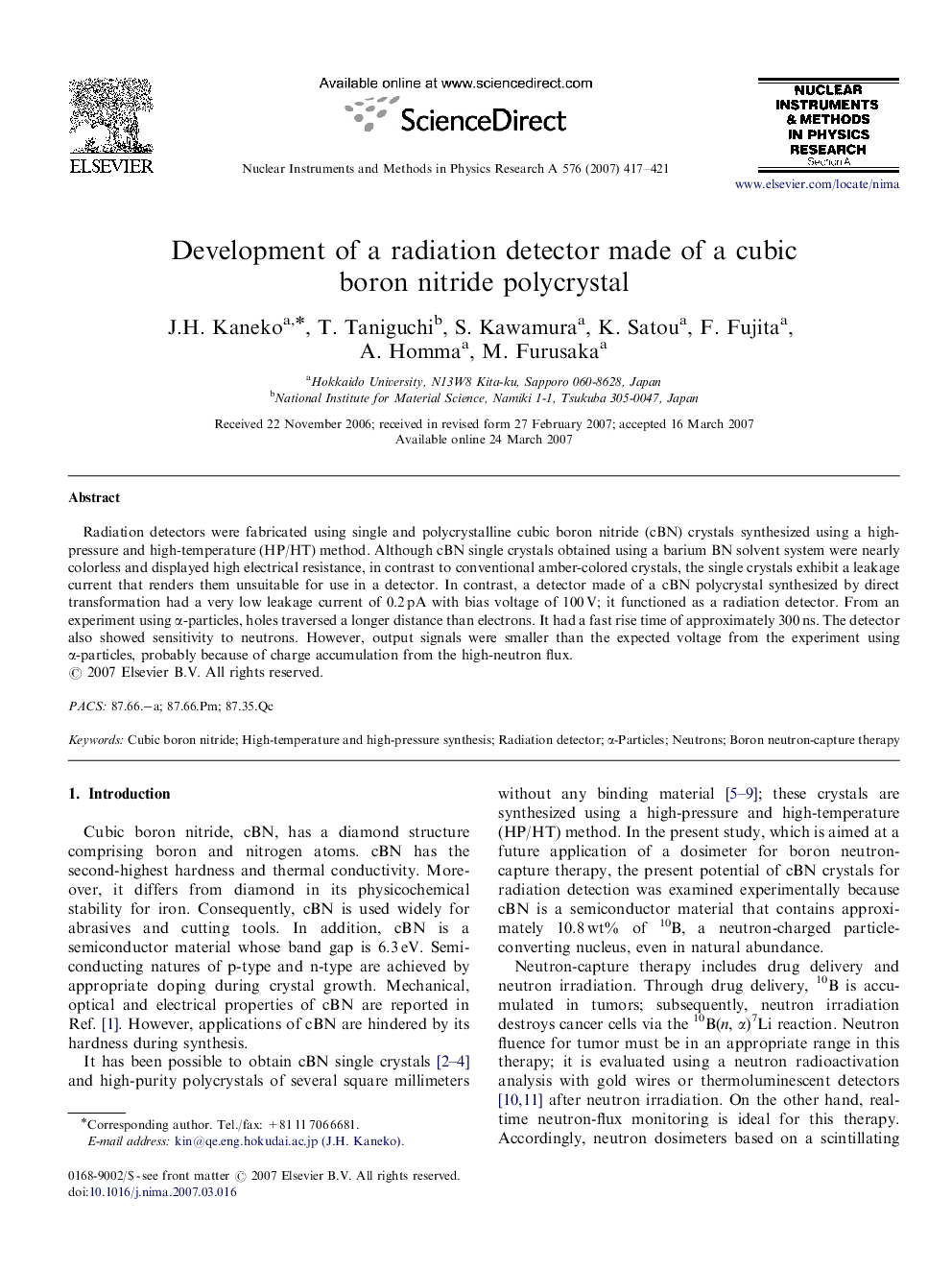| Article ID | Journal | Published Year | Pages | File Type |
|---|---|---|---|---|
| 1830439 | Nuclear Instruments and Methods in Physics Research Section A: Accelerators, Spectrometers, Detectors and Associated Equipment | 2007 | 5 Pages |
Radiation detectors were fabricated using single and polycrystalline cubic boron nitride (cBN) crystals synthesized using a high-pressure and high-temperature (HP/HT) method. Although cBN single crystals obtained using a barium BN solvent system were nearly colorless and displayed high electrical resistance, in contrast to conventional amber-colored crystals, the single crystals exhibit a leakage current that renders them unsuitable for use in a detector. In contrast, a detector made of a cBN polycrystal synthesized by direct transformation had a very low leakage current of 0.2 pA with bias voltage of 100 V; it functioned as a radiation detector. From an experiment using α-particles, holes traversed a longer distance than electrons. It had a fast rise time of approximately 300 ns. The detector also showed sensitivity to neutrons. However, output signals were smaller than the expected voltage from the experiment using α-particles, probably because of charge accumulation from the high-neutron flux.
